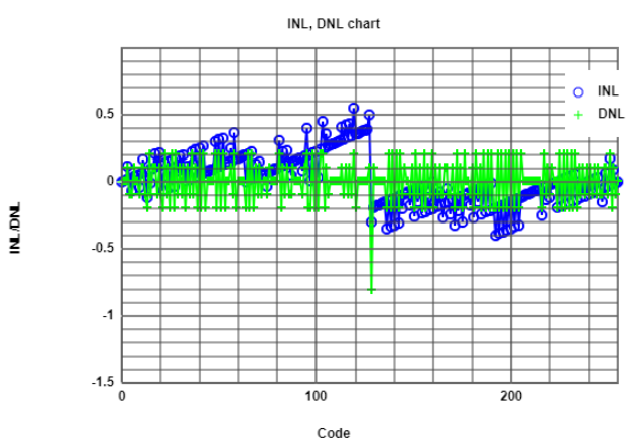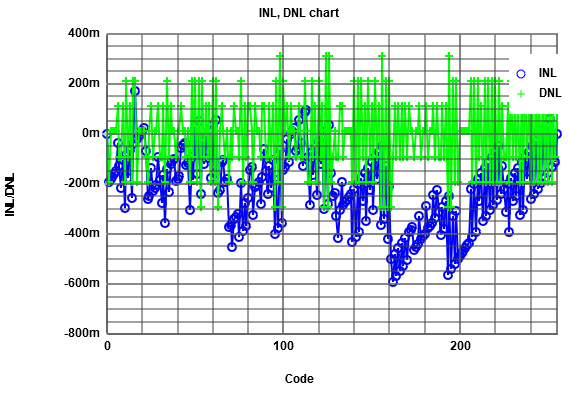Interface ElectronicsLab 04 Analyze, Simulation and Calibration of a 8bit R2R-DAC***742R, ***136H |
Overview
- Building a 8bit R2R-DAC
- Simulation of the DAC with real resistor values
- INL/DNL ramp test, FFT (sine test) of simulated DAC
- Measurements of real DAC
- DAC behaivior at high frequency
- Settling time of the real DAC
- INL/DNL of real DAC (ramp test)
- Optimization of real DAC
- Software Calibration of DAC
- FFT of optimized DAC
- Including "Export data with ReadOsci tool": ***742R
- From there: ***136H
Work distribiution:
Building a 8 bit DAC
|
| schamatic 1 |
Simulation of DAC with ramp test
|
|

